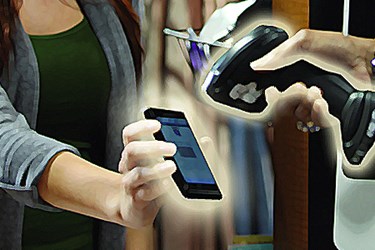Retail IT News For VARs — October 16, 2013

By Anna Rose Welch, Editorial & Community Director, Advancing RNA

In this week’s news, mobile payment technology use is growing among small businesses, a study shows that companies are investing in Big Data, and crowdsourcing data analytics could help retailers.
Mobile Payment Adoption Big In Small Businesses
Recent research released by Mercury reveals that mobile payment technology is growing in the small business industry. Mobile payment technology is expected to reach a 50 percent penetration level within the next five years. Other key findings from the study reveal that 72 percent of respondents rely on their technology and payment provider to implement a mobile solution. In addition, 47 percent claim that a POS dealer influenced their decision when purchasing a solution.
Big Data Getting Bigger
Robert Dutt for Channelnomics cites a recent Gartner study on Big Data claiming that 64 percent of organizations have invested or are planning to invest in Big Data projects. Considering the fact that a majority of organizations have not fully deployed Big Data suggests that full deployment will take some time. However, the study has found that another 19 percent expect to invest in Big Data next year, while 15 percent expect to deploy Big Data by 2015. As more and more organizations begin exploring Big Data, the challenges continue to evolve as well. While data governance challenged businesses implementing Big Data last year, discerning actionable knowledge and developing strategies are some of this year’s most prominent challenges.
Crowdsourcing Data Valuable To Designers, Retailers
According to Catherine Salfino for Cotton Lifestyle Monitor, crowdsourcing has become an important tool for designers and retailers. More than 68 percent of consumers taking the Lifestyle Survey Monitor answered that they “always, usually, and sometimes write product reviews about clothing purchased online or in-store.” These comments have been rated “very or somewhat influential” by 71 percent of consumers compared to 2010s 61 percent. Crowdsourcing data can be an important tool for designers and retailers looking to gain insight on consumer preferences.
Study Reveals Omni-Channel Opportunities
A new GFK study has found that 37 percent of U.S. shoppers use both in-store and online sources when making purchases. According to GFK, this percentage of omni-channel shopping seems to be connected to the rising number of mobile devices. The study also found that electronics is the biggest opportunity for omni-channel, with 70 percent of consumers more likely to use online and in-store sources when making these purchases. Apparel (58 percent) and home appliances (57 percent) rounded out the top three omni-channel purchase categories. The food and beverage category was one of the lowest categories amounting to 15 percent of consumers.
IT Retail Talking Points
USA Today reporter Allison Barr elaborates upon the Ship from Store trend occurring in many large retailers. According to Barr, large retailers have begun routing online orders to local stores as opposed to distant warehouses in order to save money on shipping costs and speed deliveries. This trend is setting many stores up to battle Amazon whose prices and selection have often led retailers to lose sales. Wells Fargo analyst Matt Nemer claims that the Ship from Store trend is the most important strategy that will alter physical retailers over the next five years.
Sociomantic provides an infographic illustrating statistics about mobile usage and mcommerce in order to provide insight into where mobile retail advertising is headed.
In his column for Forbes titled “Online retail sales are down and why some retailers don’t care,” Steve Olenski considers why online sales numbers for large retailers are down. He claims this lack has to do with a retailer’s (in this case, Target’s) perceptions of a sale, and whether they differentiate between sales made in different channels. Olenski cites Professor of marketing Peter Fader stating that Target’s multi-channel efforts “have made it nearly impossible to sort out how much commerce is attributable to online vs. offline.” Olenski also discusses the fate of online advertising should brands become just as “channel agnostic.”
Francois Bondiguel for Business 2 Community elaborates on the six ways retailers can use mobile POS to enhance their customer service and retain long-term customers. Some of these ways include using real time analytics to highlight products and offering personalized promotions.
